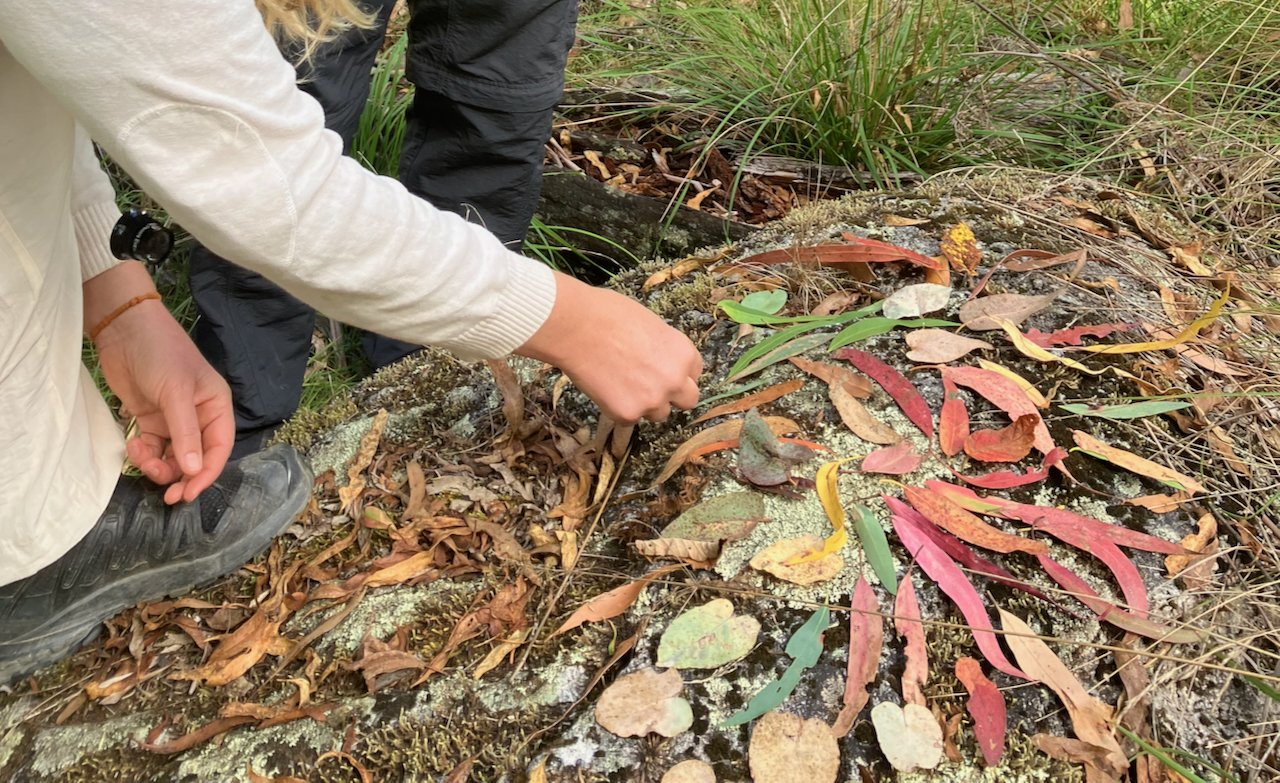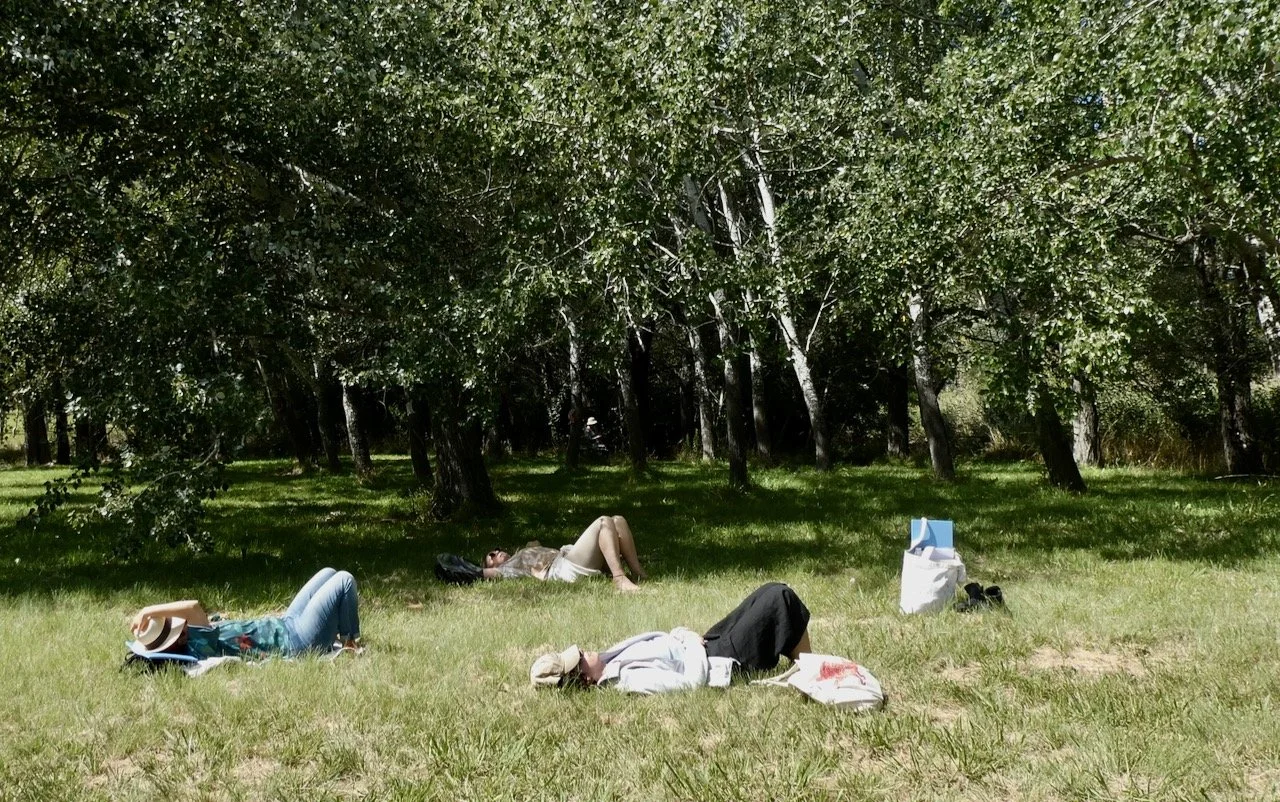What happens on a walk?
During the guided Forest Therapy walk , you’ll engage in practices to heighten sensory awareness.
Meet and Greet: Introduction to Forest Therapy (Shinrin-yoku) and the walk's details.
Tuning the Senses: Warm-up exercises to enhance awareness of smell, taste, sight, touch, and hearing, noticing subtle aromas, colours, textures, and sounds.
Quiet Aware Walking: Gentle mindful walking to explore and deepen your connection with nature.
Meet a Tree: Time to be with the majesty of the trees and enjoy quiet observation and deep listening.
Sit Spot: Time to relax and observe and enjoy just being.
The Walks
Cotter Bend
Enjoy sitting on the grassy bank shaded by the immense ancient Casuarina trees. Be still and listen to the sounds of the burbling water flowing over the smooth river stones. Listen to the calls of the variety of amazing variety of small birds. Nearby you catch sight of the Azure Kingfisher, sitting so still and watchful on a branch overhanging the rippling river, its blazing orange breast stunning in the dappled sunlight. A movement on the trunk of the Casuarina tree catches your eye and to your surprise, an Australian Water Dragon has scuttled up the trunk to a fork and is watching you intently. Another bird not often seen, the Olive-Backed Oriole returns to her nest overhanging the river, with food for her nestlings. The variety of wildlife here is astounding, particularly in the early morning.
Come and join us in exploring this wondrous spot more deeply.
Weston Park
Step into Weston Park and imagine strolling beneath the canopy of majestic, century-old Cypress, Juniper, and Pine trees, their whispering leaves offering a soothing melody. Stand in awe of the towering 30-meter Californian Redwood, a living testament to nature's grandeur.
Wander through lush, open grassy expanses, framed by the carefully crafted English Gardens. Allow yourself to be captivated by the vibrant display of rhododendrons, azaleas, and delicate bulbs that punctuate the meandering paths, creating a sensory feast of colours and fragrances.
The diverse textures and hues of bark and leaves offer a visual tapestry that will leave you mesmerised. Discover the peaceful sanctuary of Weston Park in the heart of our National Capital—where beauty, serenity, and nature's artistry await.
Tidbinbilla Nature Reserve
Enjoy connecting with nature's healing powers, walking mindfully through the reserve's picturesque trail of Mountain Ash where the koalas live. As you walk, embrace the serenity of the forest, breathe in the fresh air, and let the stress melt away. This guided Forest Therapy walk at Tidbinbilla Nature Reserve is a perfect opportunity to relax, recharge, and reconnect with the natural world away from the noise and hustle of the city.
Umbagong District Park
Discover the enchanting Umbagong District Park, a 50-hectare haven nestled in Belconnen. As you meander through this attractive and varied landscape with the melody of Ginninderra Creek providing a soothing soundtrack, especially after the rain. Umbagong District Park is more than just a place—it's a serene escape where the natural beauty and tranquil ambiance provide the perfect backdrop for moments of reflection and wonder. Come and enjoy this special place on a Sunday morning and recharge yourself for the week ahead.





